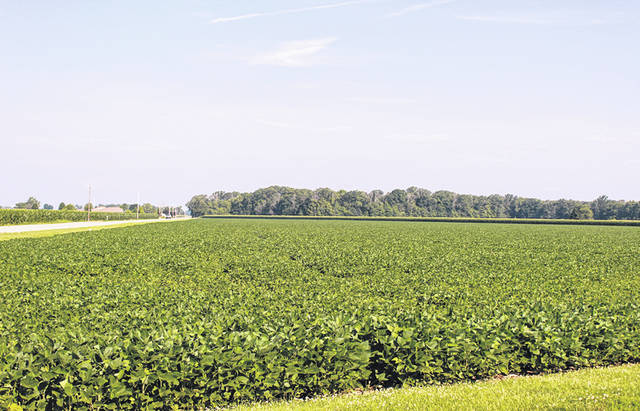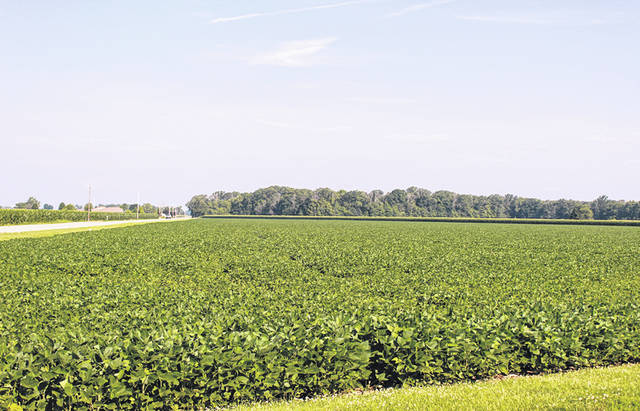

DARKE COUNTY — Local soybean farmers are being warned to closely watch their crops this season.
Sam Custer, Darke County Extension, Ohio State University, said “frogeye” leaf spots have been detected in Darke County’s soybean fields.
Custer reports in some fields in the area, the level of frogeye, detected by their small, gray spots with reddish-brown to purple borders, is quite high for this growth stage.
“Frogeye on susceptible varieties can lead to as much as a 30- or 40-percent yield reduction,” he said. “This would be equivalent to a major drought.”
Anne E. Dorrance and Dennis Mills, of the Department of Plant Pathology at Ohio State, write frogeye leaf spot on soybeans has been occasionally diagnosed in Ohio but its “occurrence and severity have increased in the last five years.”
“Frogeye leaf spot is caused by the fungus, Cercospora sojina, and will survive on crop residue left on the soil surface,” they report. “Extended periods of wet weather during the growing season will favor disease development. Rain splashing on the residue will carry spores to young leaves. It takes seven to 12 days after inoculation for symptom development depending on the temperature.”
It is typically more prevalent in the southern United States in regions with warm, humid environments, Dorrance and Mills said. Yield reductions from this disease have occurred in Ohio, and this disease also can reduce seed quality in food grade varieties and seed production fields.
One lesion in every 25 feet of row may cause significant yield loss.
For further information on preventative measures, contact Custer by phone at 937-548-5215 or visit the Ohio State University Plant Pathology field crops website at https://oardc.osu.edu/





